- Administrator
- Albums and Singles
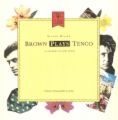 Attention American Idol contestants! Luigi Tenco failed to make the final of the 1967 San Remo Festival. As a protest against the jury's taste in music, he shot himself in the head. The song Tenco performed was "Ciao Amore Ciao" and had I been judging he would still have pulled the trigger. However....
Attention American Idol contestants! Luigi Tenco failed to make the final of the 1967 San Remo Festival. As a protest against the jury's taste in music, he shot himself in the head. The song Tenco performed was "Ciao Amore Ciao" and had I been judging he would still have pulled the trigger. However....
Luigi Tenco's best work is quite magnificent. His "Lontano Lontano" puts romance in the context of a human lifespan, with irony, regret, and a kind of ecstatic madness. The song is a delicate balance of agony, joy, and sadness with its irresistible opening lines setting the tone: "And one day a long, long, time from now, you'll see something in the eyes of somebody/And that something will remind you of me, and my eyes that once loved you so much."
Steven Brown formed Tuxedomoon in San Francisco in 1977 and the group released several records on the Residents' Ralph label. They relocated to Europe and that is probably where he discovered the recordings of Luigi Tenco. Brown's thoroughly convincing version of Tenco's material, in both English and Italian, has an air of tragedy and the wistful quality of a slightly unhinged Bowie. His view of "Ciao Amore Ciao" is almost the exact opposite of mine but we arrive at the same conclusion: "On one level it sounds like a rock ballad, but when you listen to the lyrics (and the delivery of those lyrics) this song pulls itself into another realm altogether; behind the veneer behind the gloss into yourself. If that had been the only Tenco song I ever heard, it would have been enough."
After playing in high school jazz bands, Tenco played professionally with I Cavaieri (The Knights) under the pseudonym Gigi Mai. In 1961 he issued "Quando," the first single under his real name and a little later he also flirted with acting and soundtrack music. After military service he signed with RCA and in 1966 released the wonderful "Un Giorno Dopo L'Altro" (One Day After Another). That same year Tenco fell in love with Italo-French singer Dalida. Perhaps against his will, the two performed at San Remo. On January 27, 1967 she found him dead in his hotel room, bullet wound in his left temple, suicide note nearby. Tenco and Dalida had become engaged just a few days earlier. Apparently the judges downplayed his death and the contest continued. Ah showbiz!
The backing on most of these tracks is terrific with suitably sparse piano, saxophone, double bass, clarinet, flute and light percussion. Five pieces are a re-release of a 1988 mini-album originally issued on the Industrie Discographiche Lacerba label. The 12 additional songs include Brown solo material ("Besides All That," "R.W.F.") several Tuxedomoon tracks such as "What Use?," and some interesting live recordings. All this make Brown Plays Tenco a consistent and appealing record.
samples:
Read More
- Administrator
- Albums and Singles
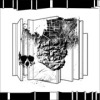 After a prolonged absence, Italy's Eidvlon re-emerge into the harsh light of day for the first time in seven years with Idolatriae, a heavy trove of dark mutterings and arcane rumblings extracted from the deepest recesses of both the human psyche and the dankest caverns of earth.
After a prolonged absence, Italy's Eidvlon re-emerge into the harsh light of day for the first time in seven years with Idolatriae, a heavy trove of dark mutterings and arcane rumblings extracted from the deepest recesses of both the human psyche and the dankest caverns of earth.
Francesco Gemelli, the High Priest of these hidden currents, leads a guided sonic exploratory tour of the dark occult catacomb spaces of the world where the shades of the dead wander aimlessly through barren landscapes, a place where even spirit no longer sheds its numinous light. EIDVLON is a Greek word denoting an insubstantial shade, an image that possesses no depth; Gemelli here uses it as a pejorative, applying it to the empty spirituality of the modern world, where the substituting of the idols of materialistic culture for the spiritual values inherent in the quest for the occult and spiritual is now a commonplace; where even the major religions have become nothing more than items in the superstore of beliefs, where the potential adherent can pick and choose a nice cosy belief-system to suit his/her needs and preferences. The spiritual landscape is bleak and uninviting to those who hear the true seeker's call; inevitably they must pass on to other pastures.
Consequently, Gemelli utilises the bleakest and darkest of catacomb sounds to describe this hollowness of the soul, where the spirit constantly mourns for the loss of its supremacy among the milling masses; the sounds appear to have been seemingly dragged from the belly of the beast itself. Granular crackling, the tolling of bells, tectonic crunches, subterranean rumblings, slow pounding reverb-soaked percussion, the lowest of prolonged bass grumblings and drones—these are the elements that Gemmelli conjures with to bring us his pessimistic vision of the slow ritualistic death of the soul and the supercession of the materialistic. The atmosphere is heavy and bleakly oppressive; it feels as if the velvet cloak of darkness abounding is completely impenetrable, and should any sliver of light dare to show itself it will be immediately snuffed out of existence. This is where hope ends and darkness begins.
For me, one of the strengths of this album is its very pessimism and cloyingly claustrophobic atmosphere, plus the sentiments expressed here tally quite closely with my own views on the subject; moreover Gemelli's use of his material expresses fully and clearly the ideas he intends to convey. He drags us down into the depths of the subterranean void to become participants in and witnesses to that final extinguishing of the light.
Samples:
Read More
- Administrator
- Albums and Singles
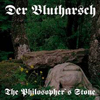 The late period Elvis sideburns that Albin Julius has been sporting in recent photos do not seem to be simply an aesthetic selection: he has fully embraced the cult of rock and roll. Although vestiges remain, he and the rest of the band have pushed away from the neofolk and avant garde martial trappings of the past into their own semi-perverted form of rock music.
The late period Elvis sideburns that Albin Julius has been sporting in recent photos do not seem to be simply an aesthetic selection: he has fully embraced the cult of rock and roll. Although vestiges remain, he and the rest of the band have pushed away from the neofolk and avant garde martial trappings of the past into their own semi-perverted form of rock music.
They have not fully forgotten their more experimental past, however. As all previous Der Blutharsch releases, all eight tracks are untitled, but in this case the vocals make it a bit more obvious what titles could be (for example, track six would surely be the title track on a more conventional project). Even with the more conventional rock structures and instrumentation, the band retains their signature depth and complexity of the mix: never does a track feel as if it was built on just the traditional guitar/bass/drums/vocal framework, even though individual instruments can be clearly identified.
As a whole, the sound seems to be heavily inspired by 1960s psychedelia, the ubiquitous Velvet Underground, 1980s goth rock, and the more current experiments in post-industrial music. The songs move along with a relatively conventional pop/rock feel, but a closer inspection of the individual elements gives it a more varied, complex structure and sonic pallet than what would be expected from "rock and roll".
Luckily the tracks tend to stay in the conventional 4-6 minute length for rock songs (with the exception of the final 12-ish minute one, excluding the "hidden" track), because structurally, they tend to be rather repetitive. There aren't many cases of subtle shifts in dynamics or instrumentation, the songs mostly start up at a certain pace and continue throughout their duration as such. Because of the fact that tracks do feature vocals and stay in a more reasonable duration, they do not overstay their welcome. It’s hard to level this as a criticism per se, because, well, that’s how most conventional rock music is designed as well, so it’s another portion of the template being followed.
The vocals tend to be a mixed bag, however. The tracks with a heavier emphasis on vocals by Marthynna, such as the opening and closing tracks, are more pleasant to these ears. The more masculine vocal tracks, like the third and fifth, channel less melodramatic elements of Glenn Danzig and Nick Cave. The lyrical content on track five is, however, all Danzig, in a bad way: trite, cheesy S&M tinged lyrics that border on comical and blight a track that otherwise is a pretty interesting combination of odd percussion and a distorted bass led groove.
The final two tracks stand out as probably the most different on the album, with the seventh one having a more propulsive, almost heavy metal pace from a rhythmic standpoint, and more aggressive vocals throughout. I guess it is about as metal as a song can get with a predominant clarinet section, however. The final, long track that I have already mentioned does, over its 12-minute duration, show more dynamics and development than the previous shorter ones, so perhaps its DB's way of instituting a bit of good old-fashioned Kraut Rock as well. The constantly varying mix and dynamics are quite fascinating, and the alternating male/female vocals with a touch of violin from Matt Howden are a great combination. The "hidden" track is, admittedly a bit corny: spoken word about knowing "the truth" and the paranoia of keeping it hidden over a repetitive synthetic beat. It's not bad, but again, one of the lower points of the disc.
I can't compare this to any of their other releases I know of theirs, but I can say that it is an interesting mix of the more experimental stylings of the past placed into a more conventional "rock and roll" structure that gives it a rather individual sound that, even with its warts, is still engaging.
samples:
Read More
- Administrator
- Albums and Singles
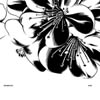 The Room40 label is quickly establishing itself as a touchstone for oblique, esoteric electronic experimentation. So on first glance, this album's cover art of a flower seems somewhat out of place among the austere design and digital graphic manipulations. It is, however, a very appropriate image given that beyond all of the digital processing and trappings, what lies beneath the layers is a subtle, beautifully melodic work that retains the innate warmth of the acoustic instruments that form the source material of these tracks.
The Room40 label is quickly establishing itself as a touchstone for oblique, esoteric electronic experimentation. So on first glance, this album's cover art of a flower seems somewhat out of place among the austere design and digital graphic manipulations. It is, however, a very appropriate image given that beyond all of the digital processing and trappings, what lies beneath the layers is a subtle, beautifully melodic work that retains the innate warmth of the acoustic instruments that form the source material of these tracks.
The relatively brief "Interlude 1" that opens the album sets the precedent for the remaining time well: gentle hovering tones excised from guitar recordings by Lawrence English that are stripped down to their barest melodic essences. Subtle digital buzzing that enshrouds the track gives it a more textural quality that is matched with the deeper electronic pulses well. The remaining "Interlude" tracks, sprinkled throughout the album, all follow a similar mood, probably due to being based on the same source material. That is not to say that they are too similar, which isn't true at all, they simply stay with that formula of an icy, predominant melody with clicky surface noises around the mix, a digital dirtying of otherwise digitally pure sound.
The electronic grime begins to show up a bit more on two more guitar-based tracks, both based on guitar by Ben Frost. Never straying into anything resembling noise or utter dissonance, elements of static creep in and make themselves a bit more pronounced over these two longer tracks. "These 1" is the longer of these two tracks, clocking in at over 17 minutes and, although it is based on extremely simple and repetitive tones, the subtle shifts in dynamics around them keep it from stretching into boredom and instead maintains an hypnotic feel that is not easly ignored.
The remaining track, the 20-minute "Falter," differs not only in its source material (in this case a piano recordings by Bernd Schuer) but in its overall structure and approach. Rather than focusing exclusively on melody, there is more of a rhythmic element here from the more predominant crunchy textural loops and odd transient hums and buzzes. Instead of being all about the melody, it stays more wide open and spacy and feels constantly shifting and changing. Interestingly the raw piano recordings almost come out from the digital processing midway through, which makes for a captivating shift.
Basis is actually a rather warm, inviting take on a style that often is too content to remain in its ivory tower of complexity and cold inorganic sounds. By allowing more of the melody that is associated with the traditional acoustic instruments that form the core of these recordings, Steinbrüchel has also let the humanity in, which makes for a much more pleasant experience, not just those who know how to build a MAX/MSP patch.
samples:
Read More
- Scott Mckeating
- Albums and Singles
Touching on the kind of cleaned-up post industrial space that no one has really divined yet, these tracks sing back to the time when reel-to-reels opened up minds to ways forward. That era's undeveloped and burgeoning sense of investigation is rebirthed here (without the tape technology), leaving plenty of space for intrepretive input to play a part.
With snatches of spoken word seemingly taken from larger scattered diaries/narratives, different pieces of emphasis placed on different elements giving weight to multiple interpretations. The 'Dover, Calais' lyric of "Caught in Traffic" combined with a tolling bell has the open water ache of a watery journey, despite there being little, if actually anything, to support this. This cut-up prose works in several ways across this volume of Roman Concrete, some of this harking back to the early vocal experiments of Richard Youngs, chopped for source material and lowered into a local well for recording. There is the menace in the echoic lost voices of overheard hallway conversations and the broken snatches of UFO narrative of tracks like "Touchdown in Rochdale." This speaks of secrecy and hidden diaries. The music used throughout is built from a menagerie of friendless sounds: a harsh edged abandoned bed of sci-fi bleeps, squandered searchlight guitar, and electronic trivialities.
Coiling tapes and shortwave shudders are interleaved through the record, footage from blue ambient motion pictures generating a jagged soundtrack. With all this unconnected energy bouncing around it is a real curve ball when "British Train Journey" arrives. It is the most structured piece here, having a kind of simple stylophone / travelling Kraftwerk mood that touches on the squelch of the electronica that bridged the electronic ages.
Read More
- Administrator
- Albums and Singles
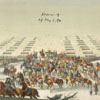 This is the final part of Nicolai Dunger's autobiographical musical trilogy, following on from the first two releases in 2005 and 2006, both of which are confusingly titled A Taste of Ra. In more ways than one, this last installment is probably his most adventurous musical exploration yet.
This is the final part of Nicolai Dunger's autobiographical musical trilogy, following on from the first two releases in 2005 and 2006, both of which are confusingly titled A Taste of Ra. In more ways than one, this last installment is probably his most adventurous musical exploration yet.
Even in an area of music known for being quite avant-garde and experimental, Morning of my Life takes some risks, the most notable being that this is one single track, in six movements, and lasting for the full 41:59 duration. Announcing itself boldly with alarmingly uncomfortable woodwind screeches (which also make an appearance towards the end), one could be forgiven for imagining that Dunger's early life was no bed of roses, yet his languid and highly expressive singing voice is more attuned to expressing longing and regret, for a world that has been lost to the past and never to be regained. The emotional tension that exists between Dunger's hurt and heartfelt delivery and the cacophonous clashing of the instrumentation (trumpet, flute, clarinet, accordion, violin, guitar, and drums) is what provides the spark and the impetus to elevate this from the merely melodramatically self-indulgent into a work of catharsis and stained beauty. Moving as it does from the acoustic fragility of the first movement through to psychedelic excess, with Dunger's voice reflecting the changes by starting gently and melodically, and thence gradually to screaming anguish, I not only shared in the emotional intensity but also directly responded to the appeal to empathise with his frustration and inadequacy when it comes to affecting time—the past is the past and has so famously been said, it is another country, forever out of reach. The shatteringly inevitable truth is that no matter how much we yearn for those moments that shaped us, they are unattainably beyond our experience.
As beautiful and as moving as I found this to be, I still found it to be something of an endurance test simply because of its length and also the fact that there are only four verses repeated throughout the piece—consequently this is not the sort of thing that I would just pop in to the CD tray just for something to listen to or use as simple background music. I would have to be in a specific mood to want to indulge in Morning of My Life, as it requires a level of emotional interaction that demands a certain commitment and concentration that could quite potentially be draining; plus its sheer length would mitigate against it being a frequent visitor to the CD player. In some respects though, this just goes to show how deeply felt this album is and how effectively communicated the emotions are.
samples:
Read More
- Administrator
- Albums and Singles
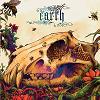 Every time an Earth album is released I maintain that it is a contender for being their best work. This is no exception. Taking their country sound even further south, this album sees the music take on a vibrant and colorful life of its own, a step away from the monochrome bleakness of Hex. Like the Biblical reference of the album's title, the imposing muscle of Earth's music has brought forth sweetness.
Every time an Earth album is released I maintain that it is a contender for being their best work. This is no exception. Taking their country sound even further south, this album sees the music take on a vibrant and colorful life of its own, a step away from the monochrome bleakness of Hex. Like the Biblical reference of the album's title, the imposing muscle of Earth's music has brought forth sweetness.
While the major hallmarks of Earth are all present (the drone, the unusual time signatures and the most gorgeous guitar tone this side of heaven), yet again there is a huge shift in aesthetic. Granted it is easy to see how Earth arrived at this sound compared to the leap between previous Earth albums and Hex. The sparse desert beauty of Hex and the more organic sounding Hibernaculm EP both hinted at this full, luscious approach to Dylan Carlson's musical vision. In interviews, Carlson has hinted that this would be Earth's gospel album and indeed there is a strong spiritual and southern American vibe to The Bees Made Honey… Although this is a spirituality that goes beyond praising the Lord and fully embraces the world beyond our own, a theme that has long been explored in Dylan's work.
The mood of this album is the inverse of the desperation pervading Hex. Instead of the Cormac McCarthy-esque sense of doom there is a hopeful air to the album. A bright new dawn is evident from the opening moments of the disc. The shuddering, stop-start rhythm of "Rise to Glory" captures an almost ecstatic glee; the joy of a new day after the cold night of Hex. This is followed with a wonderful reprise of "Miami Morning Coming Down" from Hibernaculum, very different to the original but oddly still instantly recognisable.
When I saw Earth previewing parts of The Bee Made Honey… live before Christmas, the stand out piece of the night was the title track of the album. "Just try to relax" was Carlson's instructions and no better direction can be given. Here the song is not quite as potent as the volume just simply cannot be replicated at home but the meditative tones of the piece still massage my brain into a place devoid of stress and worry. The liner notes to Earth2 may have been somewhat tongue-in-cheek with quotes from people whose tension headaches disappeared while listening to that album but I have found that Earth's music consistently helpful in de-stressing.
The Bees Made Honey in the Lion's Skull is a superb record. It is by far and away the most easy listening album under the Earth name. Their music may have become more palatable and mainstream over the years but the intensity has never waned. Like their previous album, this will most likely attract a lot of people who have never heard of them before and this is no bad thing. They have long existed at the margins of the metal and grunge scenes and deserve to be more widely acknowledged than they currently are.
samples:
Read More
- Administrator
- Albums and Singles
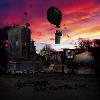 Guessmen nail fat pop choruses to rowdy dancefloor organic/digital hybridised belters, cementing them into their weird rag and bone musical world. With an alleyway lyrical eye for demented characters this trio pilot the line between cartoon, narratives and character pieces. Helmed by characters with sharp collars and bloody knuckles, their chip-and-pin medicine show molarises genres till only the vitals remain.
Guessmen nail fat pop choruses to rowdy dancefloor organic/digital hybridised belters, cementing them into their weird rag and bone musical world. With an alleyway lyrical eye for demented characters this trio pilot the line between cartoon, narratives and character pieces. Helmed by characters with sharp collars and bloody knuckles, their chip-and-pin medicine show molarises genres till only the vitals remain.
Fuelled on empty tank dregs the bedridden vignette of "Troglodyte" is a bedlam of Birthday Party horns, a theme tune for something nobody wants to meet. Beginning with the sound of someone sandpapering a window into a mirror, "Animal Man Robot" comes through into our world with a swinging rockabilly shank. Made from paired down chunks of session solder, the sounds left intact are mixed into a Whirly-gig of colors, left turns, and heavy tread anthems.
The air of second-hand smoke flows through the album's darker edges, noir-esque broken sardine lid plinks and plonks bayonneting "Sunglasses" to the roof. Some of this album is plain mean, the hip-hop silhouette of a surly joker three-piece bearing over the records slower pieces. "My Sugar" has Peter Hook caught with his pants down, a bass line of low slung sleaze and synths like Vangelis in chip fat; God forbid you ever end up being this guy's sugar. Self-sampling seems to be the order of the day for Back From the Bins, demo loops providing window ledges to leap with the song from. There are seemingly familiar (but as yet unknown) samples at the neon night core of "Warning," a surprising atmosphere piece that recalls '90s laid-back Warp electronica left to float in the middle of the record. Guessmen also manage to offer a single, and unexpected, moment of reality with "Weeping Willow." This schmaltz-free and tear stained reminiscence is a shaft of sunlight of soul through the dusty window of booze.
Guessmen are exuding a joy through this album despite its noir threads. With the continual shitstorm of disposable pop music continuously restarting itself, instead of remonstrating with it or taking shelter, Guessmen are punching their weight in tunes.
samples:
Read More
- Administrator
- Albums and Singles
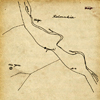 At first reference, this could easily end up pegged as a Pan Sonic side project, given that Ilpo Väisänen is one of the three members of Angel, but the music itself does not paint itself in that way, and other than the use of some textural electronic elements has no auditory connection with his other band. Don't take that as a slight against this project at all, it just an entirely different animal that, unfortunately, opens with a misstep that isn't disastrous, but isn't a high point either. The remaining three quarters, however, more than make up for it.
At first reference, this could easily end up pegged as a Pan Sonic side project, given that Ilpo Väisänen is one of the three members of Angel, but the music itself does not paint itself in that way, and other than the use of some textural electronic elements has no auditory connection with his other band. Don't take that as a slight against this project at all, it just an entirely different animal that, unfortunately, opens with a misstep that isn't disastrous, but isn't a high point either. The remaining three quarters, however, more than make up for it.
This misstep is the opening "Bones In The Sand," which tries to ape the current trend of Sunn O))) styled frozen monolith guitar riffs that become the focal point for the listener, drowning out the more nuanced guitar playing and electronic punctuation.The sound is admittedly less bleak and dark than what the robed ones usually release, but it also lacks their sense of theater and exaggeration, so rather than subwoofer rocking caveman riffing, it is more just repetitive chords.As the mix shifts to the more spacious and subtle electronic textures near the end, the level of interesting sounds also begins to increase.
The three remaining tracks that comprise the remainder of the disc more than make up for the doldrums of the opener, however.The rest of the album is more of a lurking, tension filled nod to film score ambience.Both "Kalmukia-The Discovery, Wiring, Invasion" and "Effect of Discovery, Test, Alarm, Catastrophy" are supported by thick, tangible drones of strings that layers of bizarre electronic manipulations are built upon.The former is overall very moody: buzzes of electronics sound like locusts waiting in the distance as the track slowly craws through its near 20 minute duration, becoming more and more tense as time elapses.The latter favors high pitched tinnitus bursts and other unidentifiable textures that somehow evoke a sense of being frozen in time, cold shards of digital sound enveloping the mix.
The concluding "Aftermath:The Mutation" has a somewhat lighter, more organic feel than the darkness of the preceding tracks.Its dramatic opening gives way to a deep thick mix of layered electronics, wobbling synth lines and tweeting oscillator birds flying around the rainforest.Instead of the cold, gray, bleak opening this feels much more organic, natural, and inviting.
Other than the pedantic attempt at drone metal that opens the album, the remainder is a captivating audio film that, without a specific narrative, instead allows us, the listeners, to construct our own meaning and story behind the images that the music creates.It truly feels like a film without the visuals being shown, but are instead created and given meaning by the listener.
samples:
Read More
- Administrator
- Albums and Singles
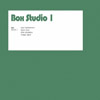 According to the label, this band was formed by writer/film-maker Philip Mullarkey to create music for and perform live with his art/film project Box. The artists, who have collaborated with the likes of Bill Laswell, Jah Wobble, Fantomas, Melt Banana and Kronos Quartet, among others, met without any planning or preparation and simply improvised together over the span of two days. They must have been a natural fit with one another, because the tracks presented here come together as a well composed suite of out there space rock/free jazz tracks rather than the live-to-tape improvisation that they truly are.
According to the label, this band was formed by writer/film-maker Philip Mullarkey to create music for and perform live with his art/film project Box. The artists, who have collaborated with the likes of Bill Laswell, Jah Wobble, Fantomas, Melt Banana and Kronos Quartet, among others, met without any planning or preparation and simply improvised together over the span of two days. They must have been a natural fit with one another, because the tracks presented here come together as a well composed suite of out there space rock/free jazz tracks rather than the live-to-tape improvisation that they truly are.
I was intentional in saying "tape" because that is a vital component to the sound and ambience of this album: besides the fact all of the tracks were improvised live there were no overdubs or ProTools editing, and it was recorded to good old analog tape. That fact alone gives the disc a somewhat hazy warmth to it, like the fog of an early summer morning. It never interferes with the fidelity of the recording though, which remains distinct and sharp. The album is front loaded with the massive length "Untitled 9," which is propelled by a hard hitting drum line that only relents at the mid-point break of the track, along with bizarre processed guitar abuse, some oscillating electronic tones, and a very dubby bass line from Fantômas member/John Zorn collaborator Trevor Dunn.
While somewhat structured at first, the mix feels like begins to fall apart: the electronics from Ståle Storløkken start getting wobbly and Raoul Björkenheim's guitar starts to slip into stuttering jazz horn progression sounds before everything comes to a dead stop. The silence is allowed to hang for a bit before the track ramps back up into a similar vibe, but led by Morgan Ågren's brushed drumming and Bjorkenheim switching to viola.
The remaining tracks retain the same sort of mood as the opening, but end up significantly shorter, mostly hovering in the five to eight minute range. Some of these lean more towards the jazzier end of the spectrum, such as the steady beat and more restrained feel of "Untitled 11" and bass lead, skittering rhythms of "Untitled 3." However, the heavily effected guitar and electronic percussion of "Untitled 7" put the recording into a much more space/psych rock dimension as opposed to the jazzier one.
The biggest departure comes with "Untitled 13," which throws some scraping low end guitar riffs on top of pulsing electronics and marching band type drums that paint the whole track more as a unique take on stripped down minimalist metal more than anything in the sphere of jazz. In some regards there is a feel that the album as a whole is antecedent of some of Bill Laswell's stranger experiments during the mid 1990s, which resulted in a slew of varying projects. There are no specific parallels in sound, but in intent and experimentation. Considering the nature of these recordings, I wonder how things will turn out with subsequent releases: now that the players have had enough time to become more familiar, I can only guess how that will play out on the sound in the future.
samples:
Read More
- Administrator
- Albums and Singles
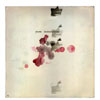 It would be fine by me if Belong were to repeat the lush distortion of their debut October Language forever. Instead, on Colorloss Record they turn down the bass a little and add lots of vocals that they process just shy of oblivion. All of which creates a feeling similar to listening to A Hard Day’s Night through your teeth.
It would be fine by me if Belong were to repeat the lush distortion of their debut October Language forever. Instead, on Colorloss Record they turn down the bass a little and add lots of vocals that they process just shy of oblivion. All of which creates a feeling similar to listening to A Hard Day’s Night through your teeth.
This four track vinyl-to-digital EP captures the spirit of a tape that has been sitting in the attic for 18 years and has lost a large proportion of its fidelity. Yet these shimmering pieces have the mixture of euphoria and disintegration just right. Some people may hear only echoing noise but others will enjoy a crush-like chemical reaction. Belong lift us up (to) where we love. They create an atmosphere of iridescent, woozy rapture as guitar, synth, and mellotron are chamfered beyond belief and joined with analog effects. The EP evokes a lonely imaginary world; a current reference might be the protagonist living with locked-in syndrome in the film The Diving Bell and The Butterfly.
All four songs inhabit a bizarre space between Tim Hecker, The Floaters, Hawkwind, and Songs of the Humpback Whale. Belong's waves of sound ebb and flow until it becomes difficult to gauge whether the music is fast or slow. The shifting, decomposing, pulse rhythms and hypnotic wash of sound encourage a loss of bearings or a flip of perception. The effect can be like leading a race only to discover that the other runners have turned around and you are now last, or noticing that the picture of the vase is also two people facing each other. It took several listens for me to notice the section during "Beeside" when pretty much everything but the voice cuts away. This moment does not match the shocking realization that at some point in the newer version of Gavin Bryars' Jesus' Blood Never Failed Me Yet the tramp's voice disappears, but in a small way it is pretty effective.
Colorloss Record has the distortion and haunted prettiness of October Language but the new tweaks bode well for Belong's full-length release coming later this year. Incidentally, DJ Fleamarket (curator and High Priest of the Deep South Museum & Church of Sacred Vinyl) informs me that the vocals to "My Clown" and "Beeside" originated on 45s from the English psychedlic groups July and Tintern Abbey, and he's usually correct. Meanwhile, Belong originate from New Orleans and some of us still regret that they were not invited to do the half-time show when the New Orleans Saints played their first post-flood home game in 2006. The NFL and the Bush administration missed a great opportunity. Instead of some washed-up bores drowning out token local brass band artists, Belong might have played "I Never Lose Never Really," and that fucker could have beamed a subliminal message across the globe: something about the abstract nature of freedom, beauty and decay, or the reaffirmation of the imperative to sculpt sonic effigies of the ghost of Brian Wilson and eat great seafood.
samples:
Read More


